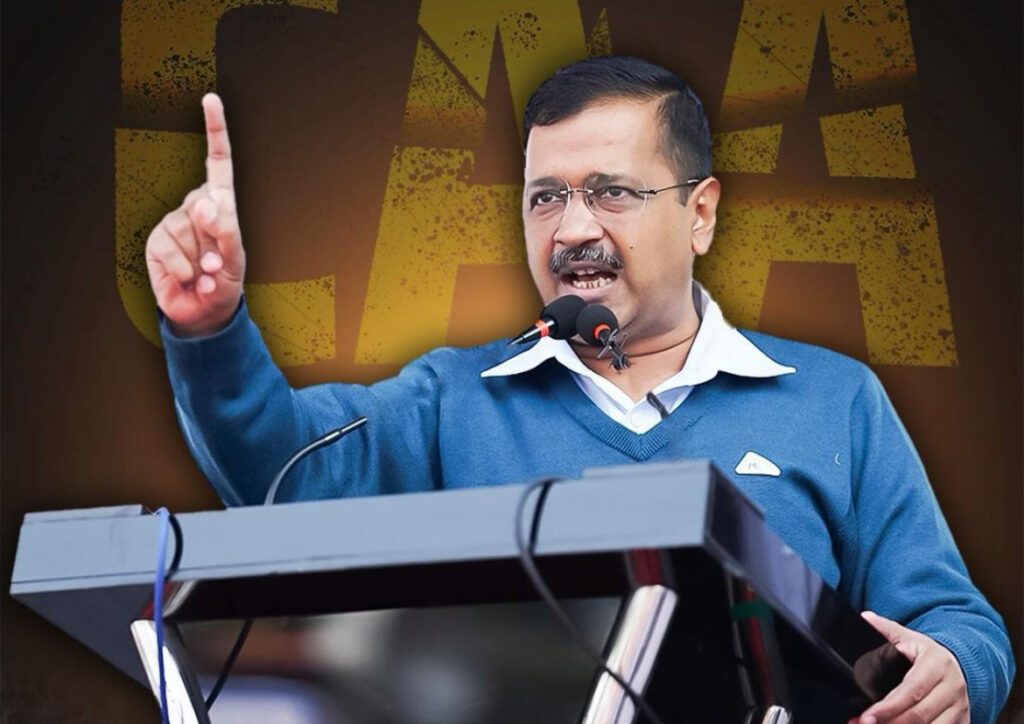The Delhi High Court has recently called upon the Enforcement Directorate (ED) to articulate its viewpoint regarding a challenge posed by Delhi’s Chief Minister, Arvind Kejriwal. The contention arose after the ED issued summons to Kejriwal in connection with a case pertaining to alleged money laundering activities linked to the city’s excise policy. This directive was issued on March 20, marking a pivotal moment in the legal proceedings surrounding this high-profile case.
At the heart of this legal tussle is the Aam Aadmi Party (AAP) leader’s plea, which not only contests the summons served to him but also questions the applicability of certain sections of the Prevention of Money Laundering Act (PMLA) in this context. The bench, led by Justice Suresh Kumar Kait, has allowed the investigative agency a two-week window to submit its response to Kejriwal’s challenge.
This is not the first time Kejriwal has been called upon by the ED; this marks the ninth instance. The most recent summons demanded his appearance on March 21 for interrogation under the stringent provisions of the PMLA. Represented by senior advocate AM Singhvi, Kejriwal has raised several issues in his petition, notably questioning whether a political entity falls within the scope of the anti-money laundering law.
During the court proceedings, the bench probed the reasons behind Kejriwal’s consistent absence in response to the summonses. His counsel underscored the critical need for safeguards against any coercive actions, especially considering the agency’s perceived intent to detain him amid the impending elections. Kejriwal has steadfastly rebuffed these summonses, deeming them illegitimate.
The backdrop to this legal battle is a case steeped in allegations of corruption tied to the Delhi government’s excise policy for the fiscal year 2021-22, a policy that was later revoked. The case took a significant turn when the Lt Governor of Delhi, VK Saxena, recommended a probe into the alleged corrupt practices. This recommendation led the Central Bureau of Investigation (CBI) to register a First Information Report (FIR), laying the groundwork for the ED’s subsequent investigation into money laundering.
The investigation centers on the procedural and administrative lapses purportedly made during the reform of the excise policy. It is alleged that these lapses resulted in undue advantages for certain license holders, an issue that has raised eyebrows and led to serious allegations of misconduct.
Notably, prominent AAP figures Manish Sisodia and Sanjay Singh find themselves in a precarious position, as both are currently detained in judicial custody in connection to the case. The ED’s scrutiny has persistently highlighted Kejriwal’s involvement, asserting that the policy was crafted in a manner that conferred undue benefits to some, in return for financial kickbacks to the AAP.
Despite the gravity of these allegations, Kejriwal recently managed to secure bail from a Delhi court concerning two complaints lodged by the ED. These complaints were tied to his failure to comply with six out of the eight summonses previously issued to him in this money laundering investigation.
As the case progresses, the legal and political spheres are keenly observing the developments. The next hearing, scheduled for April 22, is anticipated to shed further light on this intricate case that intertwines the realms of politics, law, and governance. The outcomes of this case could have far-reaching implications, not just for the individuals directly involved but also for the broader political landscape and the legal frameworks governing anti-money laundering efforts in India.
The unfolding Delhi Excise Scam case, involving high-ranking officials and the Chief Minister of Delhi, Arvind Kejriwal, represents a critical juncture in India’s ongoing battle against corruption and money laundering. As the judiciary scrutinizes the intricacies of the Prevention of Money Laundering Act (PMLA) and its applicability to political entities, the proceedings underscore the complexities of governance and legal accountability in the country. With each hearing and judicial decision, the case not only highlights the challenges of ensuring transparent policy implementation but also reflects the tension between political authority and law enforcement agencies. As stakeholders from various sectors watch closely, the resolution of this case could set significant precedents for future governance and legal practices in India.

